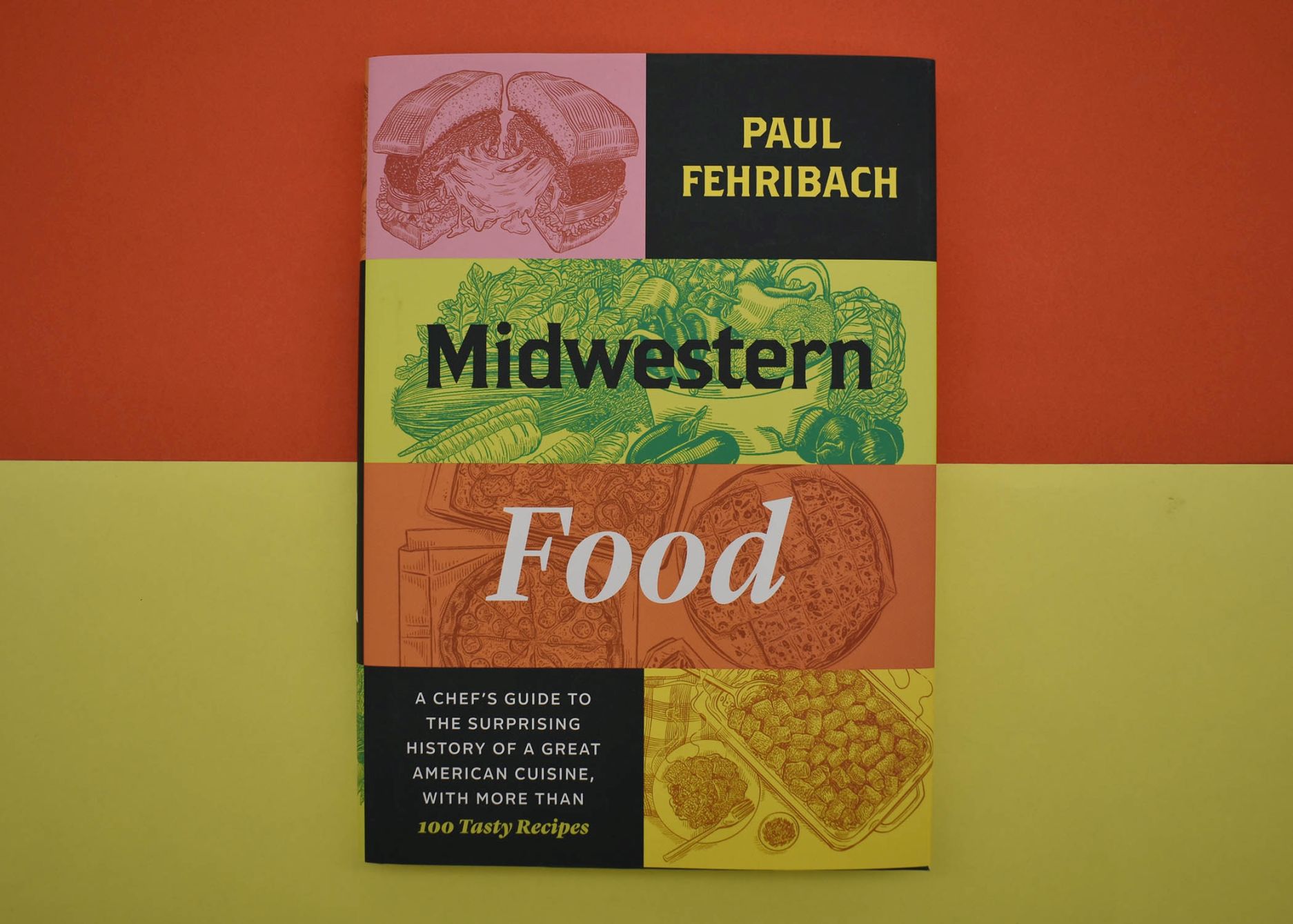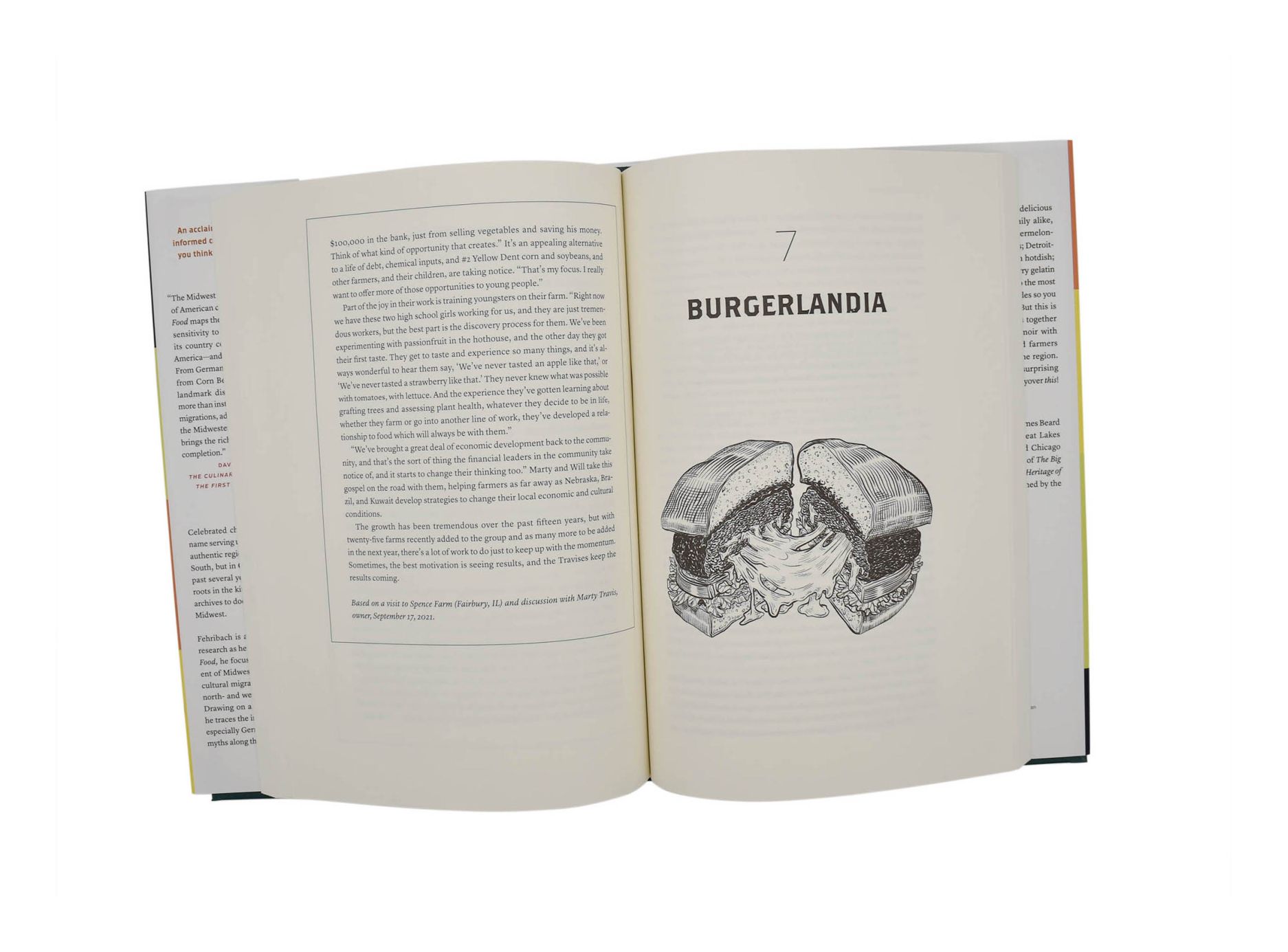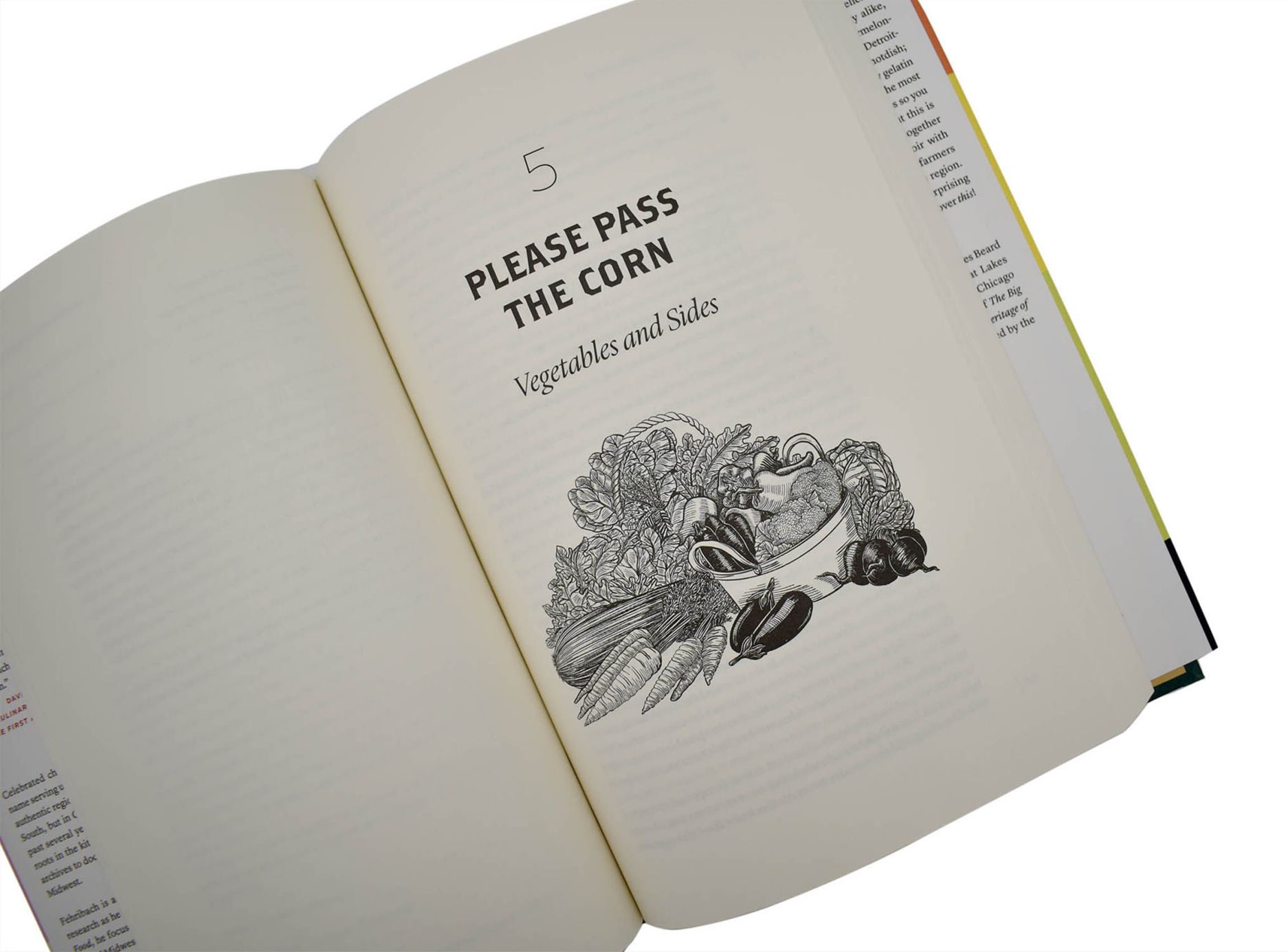Midwestern Food
A Chef’s Guide to the Surprising History of a Great American Cuisine, with More Than 100 Tasty Recipes
Midwestern Food
A Chef’s Guide to the Surprising History of a Great American Cuisine, with More Than 100 Tasty Recipes
Celebrated chef Paul Fehribach has made his name serving up some of the most thoughtful and authentic regional southern cooking—not in the South, but in Chicago at Big Jones. But over the last several years, he has been looking to his Indiana roots in the kitchen, while digging deep into the archives to document and record the history and changing foodways of the Midwest.
Fehribach is as painstaking with his historical research as he is with his culinary execution. In Midwestern Food, he focuses not only on the past and present of Midwestern foodways but on the diverse cultural migrations from the Ohio River Valley north- and westward that have informed them. Drawing on a range of little-explored sources, he traces the influence of several heritages, especially German, and debunks many culinary myths along the way.
The book is also full of Fehribach’s delicious recipes informed by history and family alike, such as his grandfather's favorite watermelon rind pickles; sorghum-pecan sticky rolls; Detroit-style coney sauce; Duck and manoomin hotdish; pawpaw chiffon pie; strawberry pretzel gelatin salad (!); and he breaks the code to the most famous Midwestern pizza and BBQ styles you can easily reproduce at home. But it is more than just a cookbook, weaving together historical analysis and personal memoir with profiles of the chefs, purveyors, and farmers who make up the food networks of the region.
The result is a mouth-watering and surprising Midwestern feast from farm to plate. Flyover this!
Reviews
Table of Contents
Chapter 1: On Relishes, Sweets, and Sours: Pickles and Preserves
Meet the Locals: Justin Dean
Chapter 2: A Country Well Lit: Cocktails
Meet the Locals: Andy Hazzard
Chapter 3: Baker’s Delight: Breads
Meet the Locals: Titus Ruscitti
Chapter 4: Of State Fairs, Tailgates, and Main Street Cafés: Sandwiches and Handheld Food
Chapter 5: Please Pass the Corn: Vegetables and Sides
Meet the Locals: Rob Connoley
Chapter 6: Pull Up a Chair: Meat and Potatoes
Meet the Locals: Marty and Will Travis
Chapter 7: Burgerlandia
Chapter 8: Midwestern Barbecue
Chapter 9: A Pizza Tour
Meet the Locals: Stephanie Hart
Chapter 10: Sweets: Pies, Cakes, Cookies, and Confections
Meet the Locals: Erika Allen
Chapter 11: What Next, Heartland?
Acknowledgments
Notes
Bibliography
Index
Excerpt
Grandma Morelos, riding shotgun, held court while the Sobeleskis and Fehribachs swayed and bobbled down Gratiot Avenue in East Detroit as Dad navigated, weaving the ocher- hued Dodge Tradesman van through mid-morning traffic past a booming downtown before catching the highway to the southwest side. Our destination was a relatively new addition to the Mexican-town enclave, La Gloria Bakery, which would thrive through decades of tumultuous change in the erstwhile Motortown to become an institution, an important stop for anyone looking for a taste of Mexico in Detroit.
The adults had their own agenda— to secure some chorizo, tortillas, and avocados at the grocery on the corner— but for me, there was one reason and one reason only to be in Mexicantown, and that was the panes dulces— sweet, rich yeast breads with any number of glazes and toppings in a mind- bending array of shapes and designs, displayed alongside cookies and cakes made with the same marvelous creativity in a long, floor- to- ceiling wood and glass display case. My most rabid obsession was the one smeared with a red jam, raspberry or strawberry perhaps, but to my young palate the flavor was just a delightful fruity red, then showered with a snow of coconut that reminded me of the dreams that live inside a snow globe. It would yield to my bite with a pillowy softness laced with the tang of fruit, the perfume of yeast, and the heady aroma of coconut. The pan dulce never made it all the way back to Grandma’s home in Roseville, the working- class ward populated by a diverse mix of people who powered the city’s tool and die factories, providing existential support to the automobile industry.
Summer visits to Detroit were the highlight of the year. There was Grandma, of course, and Grandpa Fernando, and aunts and uncles and cousins from Mom’s family, but most alluring was the magnetism of a more diverse America than we lived in day- to- day in the WASP- y southern Indiana woods. Mom’s family was a curiously American and outrageously fun blend of Grandma’s 3 Ulster Appalachian and Florida bush heritage, her Mexican husbands and the children they bore, Uncle John’s Polish immigrant whimsy, and the hip, urbane stylings of Uncle Olin and Aunt Carol, who introduced me to the music of Prince years before it percolated to our small town. Most consequential to me today is the early exposure those trips to Detroit gave me to a diverse array of foods deeply embedded in their cultures. To experience these through family is akin to programming your soul.
Back home in the brown clapboard bungalow east of Jasper, I begged a place in the kitchen as soon as I could stand on a chair and reach over the counter. I preferred my twin sister Pam’s Easy- Bake Oven to sports or more “masculine” pursuits, attempting every trick I could muster to coax “red” flavors out of everything from cookies to brownies and biscuits as I chased an obsession with strawberries and cherries, though I quickly learned that red food color would not impart the coveted flavor. But somehow I was undeterred, and I would ultimately pursue the culinary vocation, never giving up the mind- set of a tinkerer even in the big city. There is no escaping a youth in the woods, however, and ironically, I am as infatuated with the country as a man as I was with the city when I was a boy.




